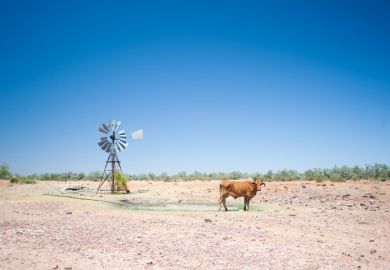Work experience at Australian universities has moved beyond a narrow focus on internships to embrace an array of commissions, fieldwork and industry simulations, according to representative body Universities Australia.
One in three university students participates in some form of work-integrated learning, suggests UA’s inventory of the field across the country’s 39 comprehensive universities.
Examples include running ethical investment funds and using the proceeds to bankroll scholarships; building electronic circuits for low-orbit satellites; dishing up free advice at a beachside legal clinic; and interning with local cyber security businesses.
Margaret Gardner, UA chair and Monash University vice-chancellor, said that communities and businesses were benefiting from universities’ efforts to satisfy student demand for practical work experience. “This includes chances for students to work on industry projects, advise community groups, treat healthcare patients under supervision and try their hand at consulting work," she added.
The stocktake of work experience, claimed as a national first, is being released at the 2019 UA Higher Education Conference in Canberra. UA found that more than 450,00 students – 33 per cent of its members’ enrolments – had undertaken work-integrated learning in 2017.
While domestic undergraduate students comprised the bulk of participants, one-quarter were postgraduates and over one-fifth were international.
And while traditional work placements proved most popular, undertaken by about 43 per cent of participants, “industry projects” – where students were not based at the business premises – involved a further 23 per cent.
Another 13 per cent of participants undertook simulated workplace tasks, in settings such as virtual courts or hospital clinics, while 10 per cent performed fieldwork – typically in agricultural or environmental programmes.
UA has summarised the findings in a report that features a case study from each of the group’s 39 member institutions.
Education minister Dan Tehan, who bankrolled the data collection through a grant from the education department, said that the findings helped explain a recent improvement in graduate employment rates.
Separate research commissioned by UA suggests that community opposition to the government’s research funding cuts, outlined just before Christmas, is as fierce as the disapproval over teaching grant cuts in late 2017.
The online survey of about 1,500 Australians, including around 1,000 from marginal constituencies likely to decide this year’s federal election, found that 66 per cent of respondents opposed the research funding cuts with just 10 per cent endorsing them.
Similar research on attitudes to the freeze of teaching grants had unearthed a disapproval rate of 62 per cent, with 11 per cent in support.
Professor Gardner is expected to seize on the findings during an address to the National Press Club, highlighting the “opportunity cost” of both rounds of cuts.
She will focus on disparities in higher education attainment across Australia, saying that young Tasmanians are about half as likely to have degrees as their counterparts in the Australian Capital Territory.
Register to continue
Why register?
- Registration is free and only takes a moment
- Once registered, you can read 3 articles a month
- Sign up for our newsletter
Subscribe
Or subscribe for unlimited access to:
- Unlimited access to news, views, insights & reviews
- Digital editions
- Digital access to THE’s university and college rankings analysis
Already registered or a current subscriber? Login








